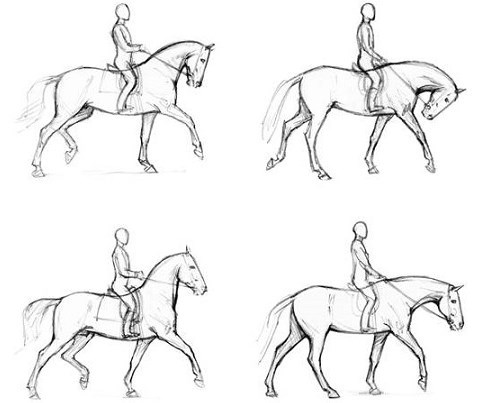Contact
Marie Rhodin
Researcher, Senior Lecturer at the Department of Anatomy, Physiology and Biochemistry (AFB)
Telephone: 018-672194
E-mail: marie.rhodin@slu.se

When competing with riding horses, the result is affected by, among other things, how the horse moves in different gaits and how it holds the head and neck. Many riders find it difficult to make the horse move regularly in the walk while the horse is walking on the reins, that is, holding the head and neck in the desired position. It is unclear how the head positions affect the pattern of movement in different gaits.
In an international study led by researchers from the Swedish University of Agricultural Sciences, seven highly educated dressage horses were studied when ridden on a force-measuring treadmill. The riders had to ride the horses in six different head and neck positions. At the same time, the horse's movement pattern was recorded with high-speed cameras.
When the horses were ridden so that the movement of the head and neck was restricted, a clear influence on the movement pattern was seen with a shorter stride length and reduced movement of the back. At a long and low neck position, the stride length and the back movements that were seen were maintained when the horse was walking freely with long reins. The movement patterns of the horses were significantly more affected by the different head and neck positions in walk than in trot.
This study was funded by the Swedish-Norwegian Foundation for Equine Research.
https://doi.org/10.3920/CEP180002
M. Rhodin, A. Byström, L. Roepstorff, E. Hernlund, P. R. van Weeren, M.A. Weishaupt and A. Egenvall. (2018) The effect of different head and neck positions on kinematics of elite dressage horses ridden at walk. Comparative Exercise Physiology: 14 (2) - Pages: 69 - 78.
Marie Rhodin
Researcher, Senior Lecturer at the Department of Anatomy, Physiology and Biochemistry (AFB)
Telephone: 018-672194
E-mail: marie.rhodin@slu.se